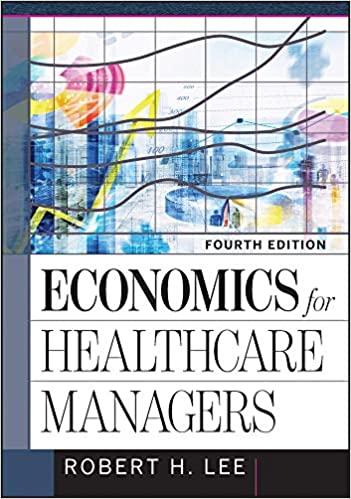It is easy to understand why JetBlue Airlines helped to establish the Employers Centers of Excellence Network.
Question:
It is easy to understand why JetBlue Airlines helped to establish the Employers Centers of Excellence Network. JetBlue and its partners shifted from paying highly variable prices for care of variable quality to paying a set price to a small group of organizations with a history of offering excellent quality. Prices are typically 10 to 15 percent lower, but the real savings occur because patients are often steered toward less invasive, less costly care. For example, local providers had recommended surgery for nearly all 450 spine patients who went to centers of excellence, but the centers recommended surgery for only 62 percent of them (Slotkin et al. 2017). The centers instead proposed physical therapy, pain treatments, weight loss, and other alternatives.
It is also easy to understand why an employee would be willing to seek care from a center of excellence. Travel, lodging, and care are covered by the program, so out-of-pocket costs are typically much lower. Some of the patients avoid unnecessary surgery, and the quality of care appears to be higher at centers of excellence. Claims data from Lowe’s (another partner in the Employers Centers of Excellence Network) show sharply lower readmission rates, much less use of skilled nursing facilities, and high rates of employee satisfaction (Slotkin et al. 2017).
Why are centers of excellence limited to US providers? The answer is unclear. Excellent providers are available in other countries for much lower prices. For example, US private insurers paid an average of $29,067 for hospital and physician services for hip replacement. Swiss insurers paid an average of $17,112, and Spanish insurers paid an average of $6,757 (International Federation of Health Plans 2016). A hospital in Cancún, Mexico, advertises a price of “from $22,004” (Qunomedical 2018).
One alternative to a center of excellence is a high-performance network, which identifies high-quality, cost-effective providers. No explicit contract may be required. In 2017 only 11 percent of employers offered high-performance networks. This percentage is expected to more than quadruple in 2018. Currently, centers of excellence are much more common, and they are expected to be available to a majority of workers in 2018 (National Business Group on Health 2017).
Discussion Questions
• Why do prices vary so much?
• Why does clinical quality vary so much?
• Why do patient experiences vary so much?
• What employers are participating in centers of excellence?
• What services do centers of excellence typically offer?
• Why might low-quality care be more expensive than high-quality care?
• Have you or someone you know used a center of excellence? What was their experience?
• Why would risks for providers be higher for a center of excellence?
• If you ran an ACO, would you choose a center of excellence or reference pricing?
• Have centers of excellence grown as expected? Have highperformance networks?
• Would you be willing to go to a center of excellence if you needed spine surgery?
• Would you be willing to go to Cancún, Mexico, if you needed a hip replacement? What about Zurich, Switzerland?
• What are the alternatives to a center of excellence program?
Step by Step Answer:






